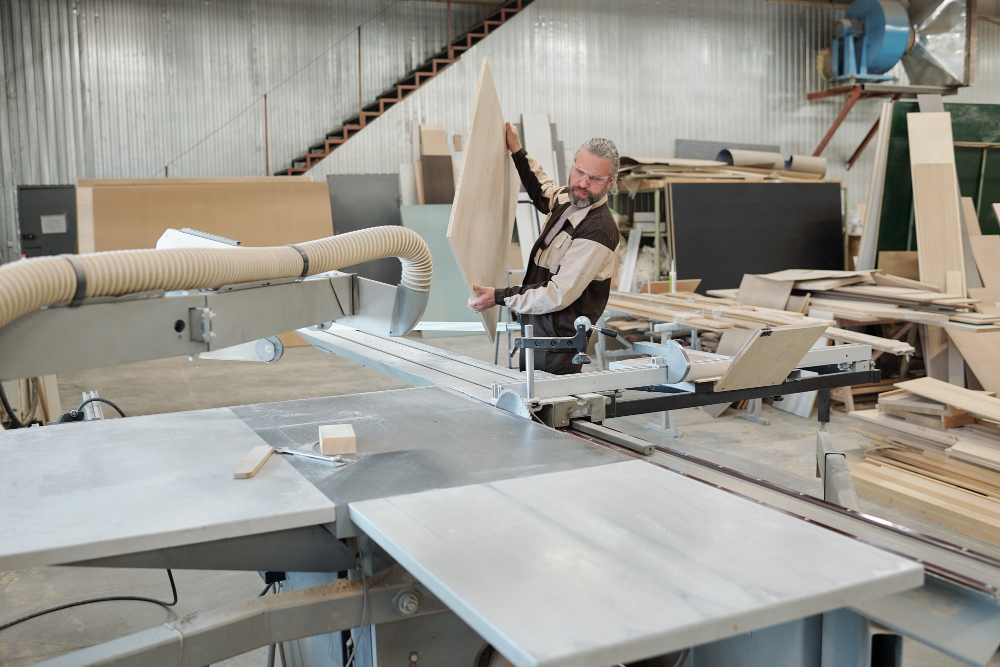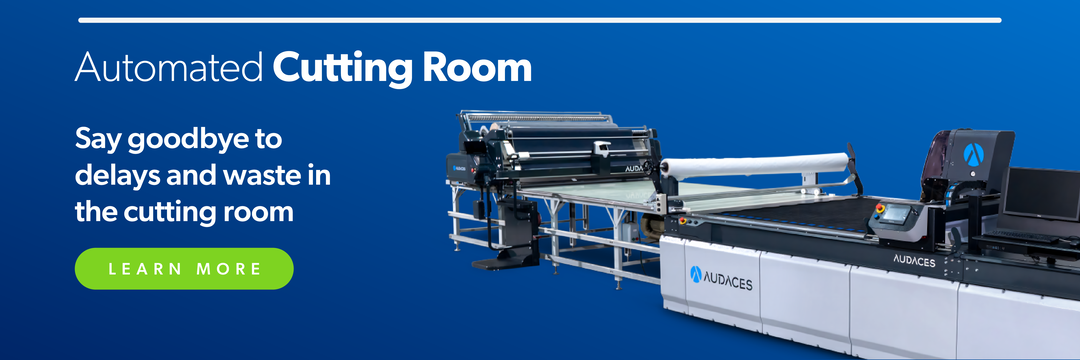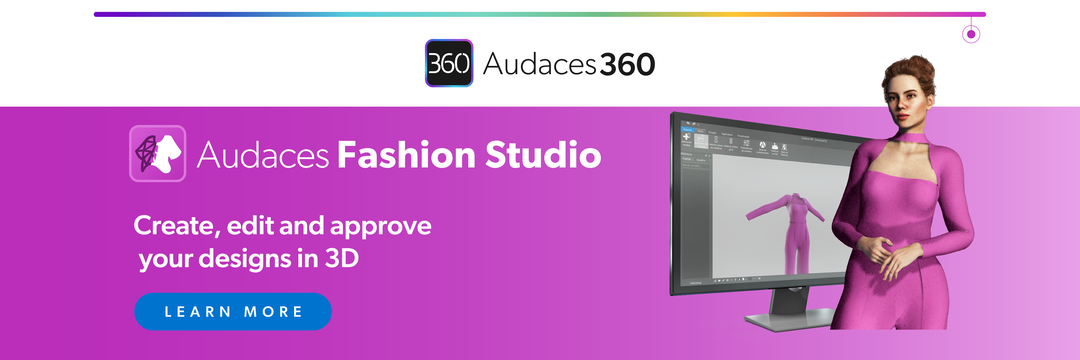Summary
- Technology is always developing to keep up with industry developments. It’s no longer just a trend, it’s part of everyday work in furniture production.
- Making the most of these increasingly affordable innovations is the best path to sustainable business growth.
- Experience the future of the textile industry with Audaces360. Start your free trial today!
If you’re in the furniture production business, you may already feel the pressure. Customers want faster delivery, high quality products and new designs. At the same time, costs keep rising.
This is where technology can make a real difference! Many solutions are available today. Some help you plan better, while others improve how you cut, assemble, or manage your stock. You must choose the ones that best fit your needs.
That’s why we created this guide. It will show you how technology can support your furniture production step by step. You’ll find everything you need in the next sections.
Happy reading!
Sumário
Why is it important to understand furniture production processes?
Understanding how furniture production works is key to success in the industry. It helps companies plan better, reduce costs, and deliver high-quality products.
Each step of the manufacturing process affects the next one. If something goes wrong in the beginning, for example, it can delay everything else. Knowing the process helps you avoid problems before they happen.
Good knowledge also helps with production planning. When you know what needs to be done, and when, it’s easier to stay on schedule. You can organize people, tools, and materials more efficiently.
It also helps with the supply chain. If you know your needs at each stage, you can work better with your suppliers. This makes the whole business more stable and cost-effective.
What is furniture production?
Furniture production is the process of turning ideas into real products. It starts with a design and ends with a finished item, ready to use or sell.
The first step is often a sketch or a digital model. Then, it goes through engineering and planning. After that, the team creates a prototype to test the design.
Once the team approves the design, the real work begins. Producing furniture involves cutting, assembling, and finishing the pieces. This part is where materials become something useful and beautiful.
The term furniture manufacturing includes everything from handmade items to large-scale factory work. It can happen in small workshops or high-tech production lines. No matter the size, the goal is the same: to make quality furniture efficiently.
Learn more: Why should your company invest in fabrication technology?
What are the stages of furniture production?

Furniture production is not just one step. It’s a journey made up of many parts. Check out the main ones:
Design
The design stage is where everything begins. It starts with an idea or a need, and the designer turns that idea into a plan.
Creating furniture is both an art and a science. It’s about making something that looks good and works well. Here, designers must think about shape, size, comfort, and style.
They also think about who will use the furniture and how. This is important because there is a wide range of users and spaces. For example, a chair for an office is very different from one for a home.
Every type of furniture has different needs, and the design must reflect that. It’s also important to notice that a strong design helps avoid problems later in the process.
Learn more: Discover how to choose the perfect furniture design software
Engineering
Once the design is ready, it goes to engineering. This step turns the idea into something that the team can build. It’s the moment where engineers check the design and choose the best way to make it.
They also choose the right raw materials. Some furniture needs strong wood, while others need metal or fabric. Professionals make sure everything fits and works together.
To make this happen, they test the structure and check for safety. They also plan how to build each part.
This stage thinks long term. Engineers plan so the furniture lasts a long time and is easy to fix or recycle.
Learn more: What textile engineering is and how it works in practice
Prototyping
The prototype is the first real version of the furniture. It’s perfect for testing the design before large-scale production, as it helps find and fix problems early.
A prototype shows how the furniture will look and feel. It lets the team check the size, comfort, and function.
This stage also helps with cost control. By testing one item, teams can improve the design and reduce future errors.
Want to bring new tech into your business with ease? Download our free guide and get started today!
Manufacturing
Manufacturing is where the furniture finally comes to life. Professionals make, assemble, and prepare all the parts for the market. This step includes many tasks, such as cutting, joining, and sanding.
Companies can choose different materials in this stage. Some pieces use natural wood, metals, fabrics, or sustainable materials.
Today, many businesses use reclaimed wood to reduce waste. It helps protect the planet and meets the growing demand for eco-friendly products.
Finishing
After the furniture production is ready, it needs to undergo the finishing process. It makes the piece smooth, shiny, or colored. It also protects the surface from damage.
Different styles use different finishes. In the beginning of the process, the designer can choose for painting or even stains to show the beauty of the wood.
One traditional wood finishing, for example, is the French polishing. It’s a technique that results in a very high gloss surface.
Quality control
Quality control is the final step. Here, the team must check every piece for problems. Professionals make sure only the best furniture reaches the customer.
They look at size, strength, finish, and safety. If something is wrong, it goes back for fixing or removal. This protects the brand and the buyer.
The last step also collects feedback for future work. It helps improve the process and avoid repeating mistakes.
In the end, quality control is about trust. It makes sure customers get products they can rely on.
Learn more: What to include in a furniture spec sheet to avoid mistakes
How can technology support furniture production?

Simulation of variants and patterns
Creating different versions of the same furniture item can be hard. You need to test colors, fabrics, and patterns. Doing this by hand takes time and effort, but technology can make it faster and easier.
With Audaces Sofia, you can simulate multiple variants of your furniture. The software uses artificial intelligence to generate realistic images. This way, you can see how each option will look before making it.
This helps you make better decisions. You can compare options side by side, avoiding wasting time or materials trying out ideas in real life.
Learn more: 4 advantages of technology in automotive furniture design
Fabric usage optimization
Using fabric wisely is key to saving money. In furniture production, fabric can be one of the most expensive materials.
In this scenario, poor planning leads to waste and extra costs. And Audaces Marker can help you avoid that. It creates precise layouts to place pattern pieces on the fabric. This way, you use as little material as possible.
The solution calculates the best position for each piece. It works fast and gives you instant results, so your team doesn’t need to do it by hand.
Automated cutting of upholstery materials
Cutting fabric by hand takes time and can lead to mistakes. Especially when you need high volume and precision, manual work is not enough for furniture production.
That’s where automation comes in! The Audaces Cutting Room brings speed and accuracy to fabric cutting. It includes machines and systems that cut upholstery materials automatically.
This means clean, exact cuts every time. It also helps reduce waste and improve safety in the workplace.
With this solution, your production becomes faster and more reliable. It’s a smart way to grow your business and meet higher demands.
Learn more: How to choose the best furniture cutting machine?
Make furniture production more efficient with Audaces
Learn how Audaces solutions assist with each stage of furniture production!
Audaces360
Audaces360 integrates cutting-edge digital innovations to optimize workflows in the textile and apparel industry. It caters to companies of all sizes and types, offering the flexibility to scale with your business needs.
All solutions were carefully developed to address the specific challenges of the field. They streamline the design and production processes, saving valuable time and resources.
The platform boasts a comprehensive range of functionalities, including pattern making, marking, collection management, vector drawing, and 3D creation.
In addition, a fashion Artificial Intelligence to assist you along the way.
Audaces Cutting Room
By embracing cutting-edge technology, garment manufacturers can achieve significant improvements in the production process. From greater design flexibility to enhanced efficiency and reduced costs.
This is where Audaces Cutting Room steps in! Our experts will thoroughly assess your company’s needs and create a comprehensive report.
Then, our team will develop a personalized project to achieve your goals and unlock your company’s full potential.
Rely on Audaces’ cutting-edge machinery to automate your production process. Achieve impeccable cuts on curves and details, speeding up your deliveries and minimizing fabric waste through automation.
Want to stay up to date on the latest fashion industry news? Subscribe to our newsletter!
FAQ
Understanding how furniture production works is key to success in the industry. It helps companies plan better, reduce costs, and deliver high-quality products.
Furniture production is the process of turning ideas into real products. It starts with a design and ends with a finished item, ready to use or sell.
The key stages of furniture production include design, engineering, prototyping, manufacturing, finishing, and quality control.










